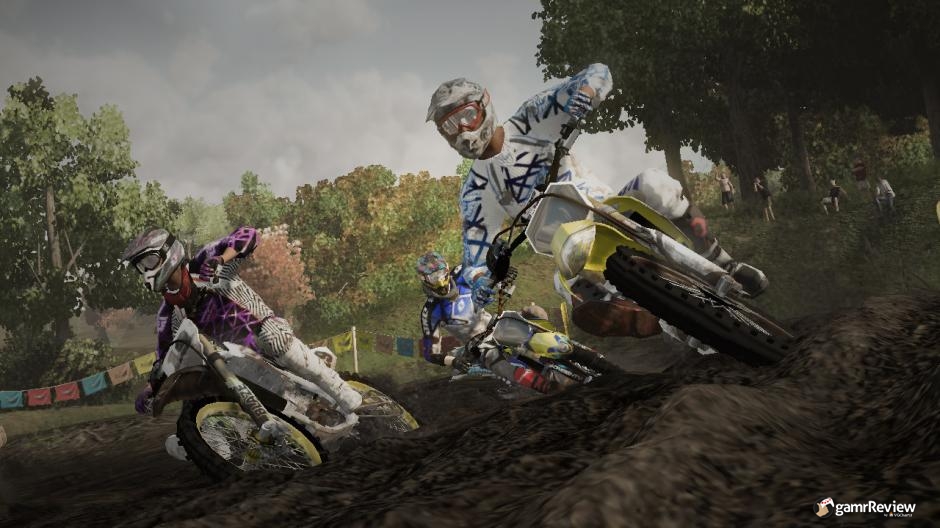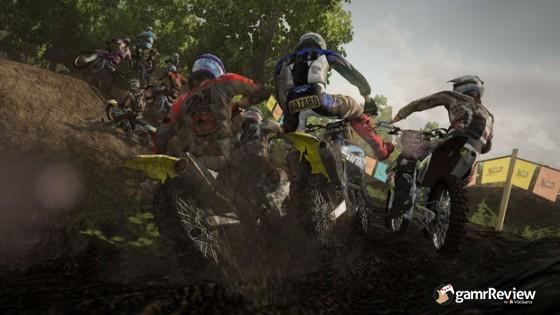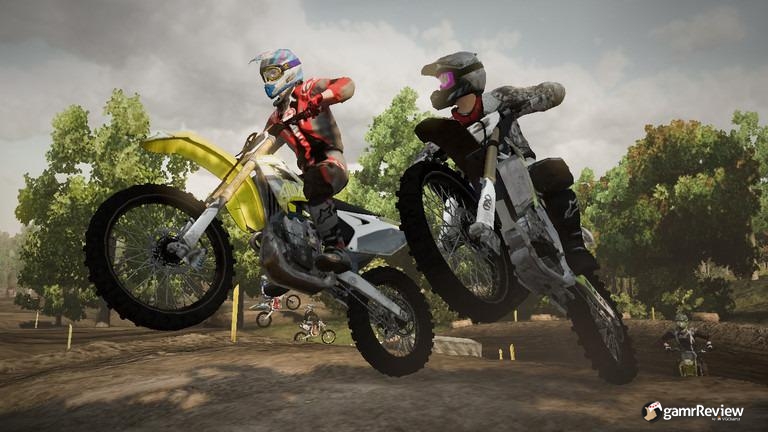Review: MX vs. ATV: Alive
Third time's the charm, fourth is just less of the same.
Every couple years we've seen another addition to the MX vs ATV franchise, with Alive marking the fourth installment, and it really seems like Rainbow Studios hit their stride with Reflex back in 2009. In many ways, Alive seems like a watered down version of the previous game with very little new to offer. When Reflex rebuilt the game, it set the stage for some great new expansion potential for future games. It seems Rainbow has instead done the opposite, and stripped the game down. That being said, the game is still quite a bit of fun, especially if you don't own any of the previous MX vs ATV games.
Gone is supercross as well as trick events in freestyle play, which now offers only two small areas out of the box, with another available via DLC. There is also a serious void of atmosphere surrounding the events that are raced in the game. While there is usually no "story" in racing games, there isn't even any real environment to Alive's career mode, as each event is separate and there is no linear arrangement of the races. I found the unlock schedule for tracks and vehicles to be unbearably slow. Alive uses a new rider and vehicle XP system for unlocks and upgrades. Rider skills, such as quick recovery, more responsive clutching, or faster wreck avoidance, unlock as your rider levels up, and parts for your vehicle unlock as you level up different vehicles. This is a good system overall, but when it is applied to what tracks are available, it causes the game to get laborious fairly quickly. There are only 2 tracks open to race in career mode at the beginning of the game, and it takes a solid 4 to 5 hours to get to level 10 where 4 more tracks open up, and some serious grinding is in store to get to level 25, where the remaining 6 tracks become available. I would have liked to have seen a somewhat more gradual process, opening new tracks fewer at a time but somewhat more frequently over the course of the game. By the time I opened up the middle set of tracks, I had completely mastered the first two tracks on all but the most difficult AI setting.

The AI in career mode makes for some serious reality checks along the way. I found that I was lapping the competition on the Rookie setting right off the bat, and when I set the same track to Amateur, I became very comfortable in 6th to 8th place for quite a while. A similar jump in skill occurred from Pro to the All-Time difficulty. I was on the podium regularly on Pro, and couldn't break 10th place on All-Time. This contributes to Alive's extremely choppy, non-fluid game experience of the player working too hard to unlock too little.
Several of the great aspects of Reflex are back: most notably the rider reflex control scheme using one stick for the bike, and the other for the rider, which is really the only way that a 2-wheeled racer works with any kind of realism, and Alive makes for a very realistic experience that's still forgiving enough to be fun. The turn assist and jump assist are both very good "training wheels" which made the game very playable up to the point around level 10 when I turned them off, at which point it didn't ruin my racing. The "real dirt" in the form of real time terrain modification is still present from Reflex as well, and makes for a very lively race environment, particularly when you are way out front and the other 11 riders have changed the lay of the land from your last lap around the course. Different types of dirt behave differently in the game, varying the level of traction and making ruts in different ways. Snowy tundra-mud of the Japanese mountains behaved noticeably different from the dry desert sand of the west. This keeps the game interesting and adds another layer of things to learn before you have completely mastered the game.
New to Alive is a wreck recovery and "bar bang" system which allows riders to recover by leaning their rider in the indicated direction after a major altercation with other riders, which will happen more and

more frequently at the higher levels of the AI and certainly online. This also works if you mess up your landing on jumps. I found this system to be fairly simple most of the time, and never really added much to the gameplay, though not wiping out as much as in the past was an improvement.
There is absolutely no tutorial of any kind, so pay attention to the tips that come up in the loading screen. The control scheme is complex, but for a realistic off-road experience they need to be. Much of the challenge of MX vs ATV, like other off-road titles is knowing how to keep your speed up in the changing environment. Knowing how to not only find the right line through the corner, but not to over-accelerate on that line and spin out, or knowing what part of the hills and bumps to hit to keep your speed up through an otherwise straight stretch. As complex as the controls are, it doesn't take more than an hour or two to pick up all but the most advanced details of the gameplay. The controls are not mappable, but there are several pre set configurations to choose from, and all of them have right and left handed versions.

The twelve tracks in the main career mode are all very nicely rendered with good attention to detail, and many are breathtaking, carved into the sides of mountains and bamboo forests. The graphics are fine, and the animation is smooth the vast majority of the time. Any of the minor graphical hiccups that occurred never interfered with my enjoyment of the game. The soundtrack is what you would expect for a dirt racer, with lots of high energy rock and punk. Sound design is average, though surround is put to good use for knowing when other riders are coming up on your back. Outside of the tracks there are over 50 riders and even more gear to customize your rider, and a good assortment of parts and vehicles, but that's about it; there is very little in the way of atmosphere. The online is somewhat watered down from its predecessor, with far fewer options, especially in the lack of trick events.
THQ has announced support for the game online with one new freeride area, two new national tracks, and tons of gear, and several vehicles slated, but with so much of the previous title's content removed, it seems like too little too late. There is still much fun to be had in the game, but it is fairly straightforward compared to other titles in the series. In order to unlock all the game has to offer, it will likely take even fairly experienced racers upwards of 20 to 30 hours (more if you're like me and it takes a while to get the hang of the game); most players will find they get their money's worth out of Alive.
Alive is still one of the best off road MX racers out there, and is very playable and lots of fun. My frustration level was significantly lower than with many racing games, and while the game isn't all that engaging when it comes to variety of content, it is still worth a look, especially if you're new to the franchise.
No comments:
Post a Comment